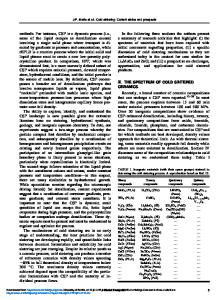Genetically Modified Crops Current Status, Prospects and Challenges
Genetic transformation is a key technology, in which genes are transferred from one organism to another in order to improve agronomic traits and ultimately help humans. However, there is concern in some quarters that genetically modified crops may disturb
- PDF / 6,255,216 Bytes
- 346 Pages / 439.42 x 683.15 pts Page_size
- 13 Downloads / 559 Views
ically Modified Crops Current Status, Prospects and Challenges Volume 2
Genetically Modified Crops
P. B. Kavi Kishor • Manchikatla Venkat Rajam • T. Pullaiah Editors
Genetically Modified Crops Current Status, Prospects and Challenges Volume 2
Editors P. B. Kavi Kishor Department of Biotechnology Vignan’s Foundation for Science, Technology & Research Guntur, Andhra Pradesh, India
Manchikatla Venkat Rajam Department of Genetics University of Delhi South Campus New Delhi, India
T. Pullaiah Department of Botany Sri Krishnadevaraya University Anantapur, Andhra Pradesh, India
ISBN 978-981-15-5931-0 ISBN 978-981-15-5932-7 https://doi.org/10.1007/978-981-15-5932-7
(eBook)
# Springer Nature Singapore Pte Ltd. 2021 This work is subject to copyright. All rights are reserved by the Publisher, whether the whole or part of the material is concerned, specifically the rights of translation, reprinting, reuse of illustrations, recitation, broadcasting, reproduction on microfilms or in any other physical way, and transmission or information storage and retrieval, electronic adaptation, computer software, or by similar or dissimilar methodology now known or hereafter developed. The use of general descriptive names, registered names, trademarks, service marks, etc. in this publication does not imply, even in the absence of a specific statement, that such names are exempt from the relevant protective laws and regulations and therefore free for general use. The publisher, the authors, and the editors are safe to assume that the advice and information in this book are believed to be true and accurate at the date of publication. Neither the publisher nor the authors or the editors give a warranty, expressed or implied, with respect to the material contained herein or for any errors or omissions that may have been made. The publisher remains neutral with regard to jurisdictional claims in published maps and institutional affiliations. This Springer imprint is published by the registered company Springer Nature Singapore Pte Ltd. The registered company address is: 152 Beach Road, #21-01/04 Gateway East, Singapore 189721, Singapore
Foreword
To get easy access to food and to improve the productivity of crop plants, humans have used methods of domestication and improvement through selective breeding, based on useful phenotypic traits. It was through the work of Gregor Mendel that we learnt about the genetic basis of plant traits. The first hybrid corn was developed in 1922 by an intelligent breeding strategy. Following the discovery of DNA as the genetic material, work of a number of groups led to the concept of gene as the unit of DNA that controls a phenotypic character of an organism. And it was in 1973 that Herbert Boyer and Stanley Cohen developed genetic engineering by inserting DNA from one bacterium to another. Around the same time Jeff Schell and Marc Van Montagu discovered that it is due to the transfer of the plasmid DNA of Agrobacterium tumefaciens that results in tumor formation in plants. This research was a by-product of
Data Loading...











